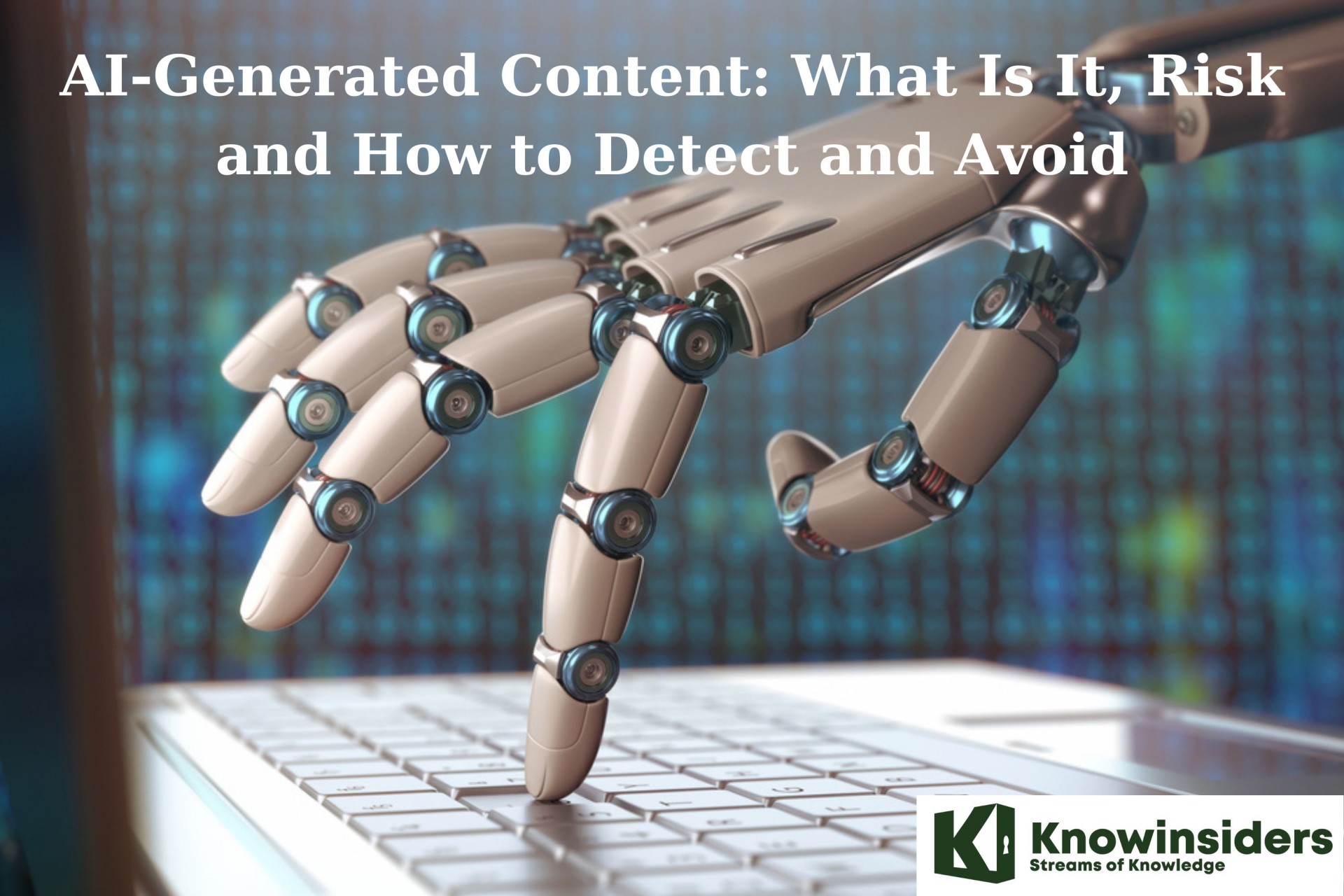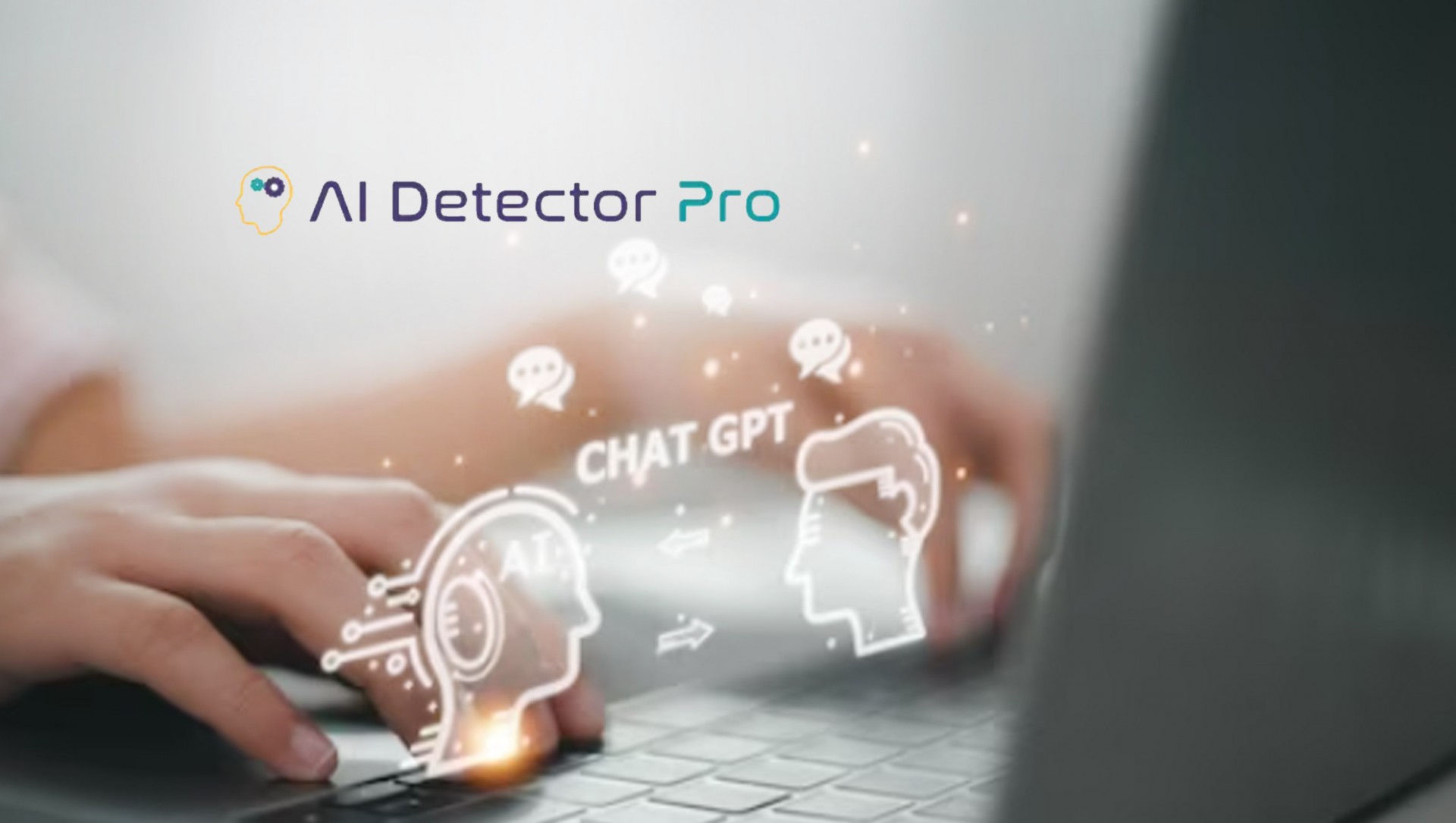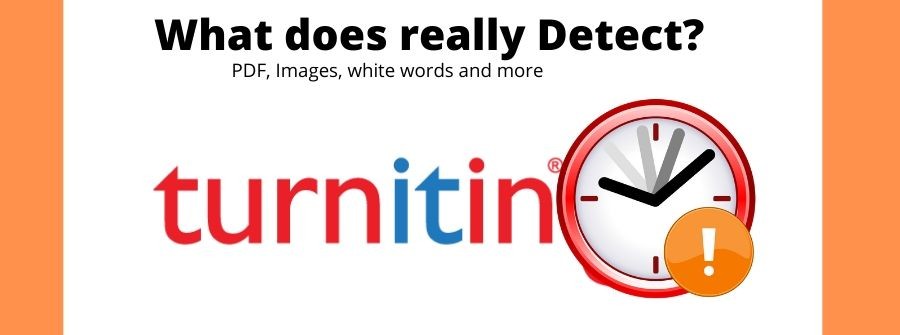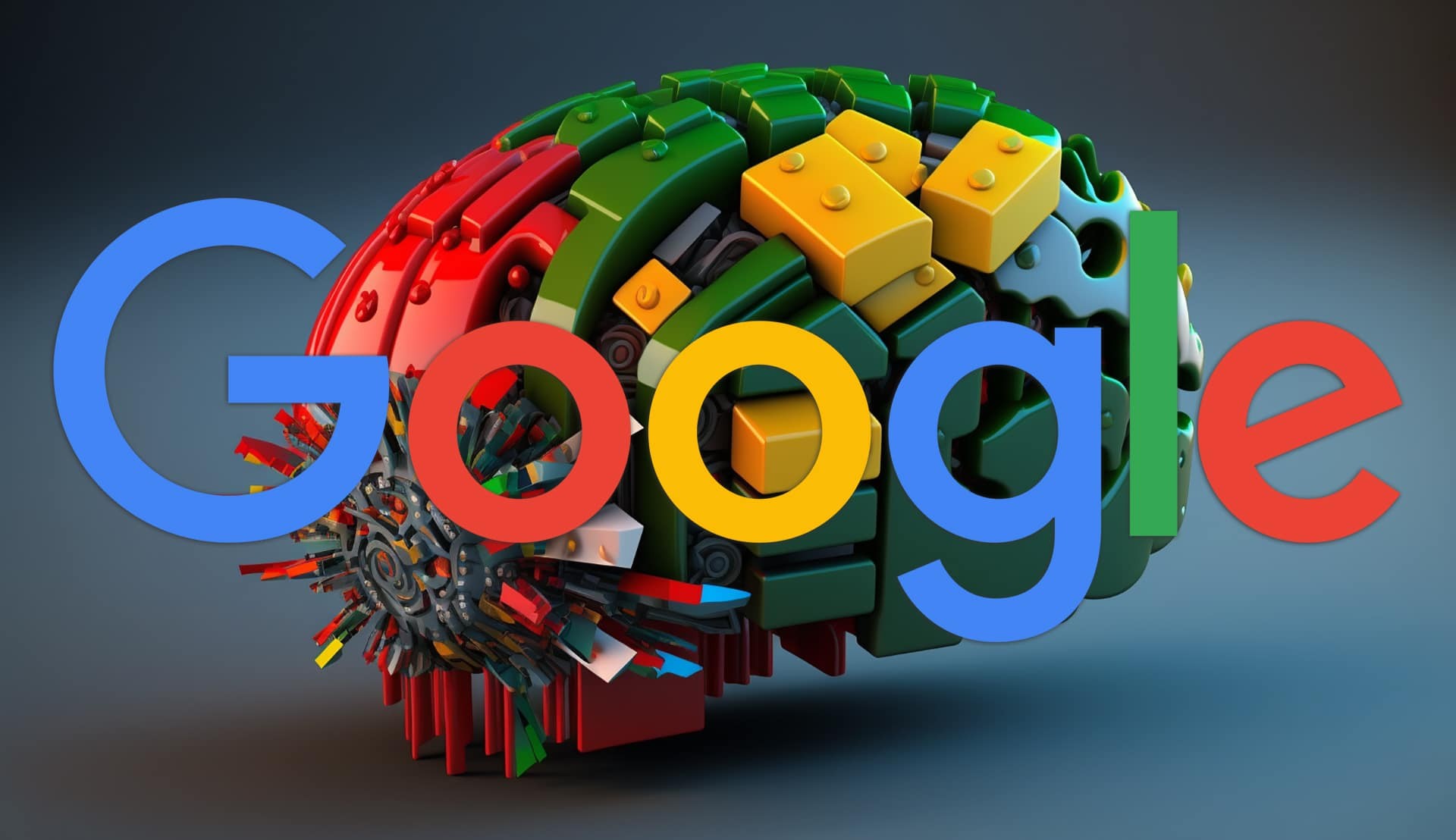How to Detect and Avoid AI-Generated Content
 Top 15+ Amazing Apps of AI That Change The World Top 15+ Amazing Apps of AI That Change The World |
 5 Hottest and Scariest AI Technologies - Top Artificial Intelligence Tools 5 Hottest and Scariest AI Technologies - Top Artificial Intelligence Tools |
 |
| AI-Generated Content: What Is It, Risk and How to Detect and Avoid. Photo: KnowInsiders.com |
| Contents |
If you want to check the originality of a piece of content, this article will show you how!
Generative AI has been a relatively unknown player on the world stage since the days of the first chatbot, Eliza, more than 60 years ago. That is, until OpenAI's ChatGPT platform suddenly appeared on the scene last November.
When ChatGPT reached 100 million active users in just two months following its lauded launch, it broke all previous records. It was also jam-packed with fireworks, tragedies, and victories. The findings of generative AI, according to Forrester Research, are "coherent nonsense." And everything is finished in a split second.
But is there a way to identify content that was created by AI? include essays, codes, and artwork? Fortunately, you have a wide range of options. We will walk you through everything you need to know in this article, and by the end, you ought to be able to recognize any AI content with ease.
What exactly is AI-generated content?
First, let's define and explain what artificial intelligence-generated material is. The more you know, the more adept you will be at understanding and spotting AI in your own application assessment.
The artificial intelligence chatbot ChatGPT was developed by OpenAI with assistance from Microsoft. Its foundation is the GPT-3 family of big language models from OpenAI, which has been improved through the use of both supervised and reinforcement learning methods.
Using sophisticated learning methods, the chatbot anticipates the following word based on prior word sequences. Though it may resemble what your phone does when you start texting a message to a buddy, it is not what is happening.
Generative AI is capable of producing text and images, blog entries, computer code, poetry, and even original artwork.
What Are the Dangers of Publishing Raw AI Content?
The risks of publishing unedited AI output are substantial. How does it manage to do this? by scanning the text for odd patterns, like the overuse of particular words or phrases.
For instance, Google's algorithm may flag and penalize you if your content contains too many keywords or uses repeated sentences.
In addition, artificial intelligence systems lack originality and creativity. Unedited output, for instance, might sound generic, lack organic transitions between sentences and paragraphs, or have a robotic feel that any rational person can recognize.
Many AI tools make use of templates or particular language patterns to compensate for this in order to make text sound more natural. However, by examining numerous pieces of content, Google can quickly spot these patterns.
Additionally, it might be considered plagiarism if you use automatic tools like spinners or rewriters on pre-written articles without adding any original data or insights.
Using AI to create content for SEO also carries the risk of disappointing website visitors who are searching for helpful information on a particular subject.
Instead, they will come across a deluge of robotic jargon that is simple to understand because language is intuitive to humans.
How To Check AI-Generated Content
 |
| AI Content Detector |
AI Content Detector
On Writer.com, the content detector can only check up to 1,500 characters, or roughly 300 words. For a longer piece of writing, checking one or two paragraphs at a time may be a more effective way to identify the passages that "are likely to follow the same pattern of words that a large language model [LLM] would produce," as stated in the Writer.com FAQ section. The detector won't be 100% accurate, but it can help indicate whether something was likely created by AI.
Start by entering text into the space provided or pasting the content's URL into the appropriate field, then click "analyze text." The likelihood that the content was created by humans is indicated by a detection score.
AI Detector
The AI detector used by AI Detector Content at Scale "has been trained on billions of pages of data and can accurately forecast the most probable word choices that lead to a higher AI detection probability."
To get a reading, paste or write at least 25 words in the space provided. An instant "human content score" will register with a percentage of predictability, probability, and pattern divided by an overall percentage; the definitions of each category are not immediately clear.
Additionally, according to the company, its detector "works at a deeper level than a generic AI classifier and detects robotic sounding content." Not the "robotic sounding" poetry of the Terminator, which scored at 89% "Highly likely to be human!" like my CDO article. The Terminator pros and cons essay confused the detector, but it did not completely trick it.
GPTZero
GPTZero was developed by Princeton University student Edward Tian, a computer science major with a minor in journalism, over the course of his winter break. NPR reports that since the app's launch on January 3, over 30,000 people have already used it.
According to NPR, Tian trained the bot to recognize two distinct characteristics: "burstiness," which compares sentence length and complexity variation, and "perplexity," which measures the text's complexity.
A model update recently made available by Tian with a focus on educators is called GPTZeroX. According to Tian's Twitter, the updated tool runs faster than the pilot version and highlights AI-generated text. It also supports larger inputs, including files for an entire class. According to Tian, these were the features that teachers most frequently asked for.
OpenAI Classifier
In order to identify whether or not something was written with AI (particularly ChatGPT), OpenAI released their own language classifier. The business asserts that you can use their tool to determine whether something was written using AI, despite it not being very trustworthy. The tool was created by the same company as ChatGPT, but according to OpenAI, only 26% of the tested AI-written samples were correctly identified as such.
It works best with longer passages of text and needs at least 1000 characters. Text that is consistently predictable cannot be reliably identified. Songs and mathematical equations fall under this category because the solutions are all the same. Some guidelines for educators attempting to deal with and comprehend the recent chatGPT hype were released along with the classifier.
Copy a text article and paste it into the input box to use the classifier; then click "submit." The samples will be automatically filled into the text field when you click on the example buttons.
How Artificial Intelligence Detectors WorkAI detection tools use enormous amounts of data sets gathered from various sources, including the internet, to predict the likelihood of words and phrases in a piece of content or image. If the following word in the content is highly predictable in relation to the preceding words in the content, the detector concludes that the word was written by AI. Like any other machine learning model, algorithms are used to identify patterns. The detector bases its final determination of the entire content—which is not always conclusive—on that pattern. |
How to Check AI-Generated Essays
 |
| Turnitin |
The techniques outlined above can be used to identify essays that were generated by AI. What ought you to do? Use an AI content detector, such as Originality.ai or another one of the many that are available online (such as Turnitin, Writer, etc.), to check the essay for plagiarism. Keep in mind that an essay with an AI detection score of 40% or higher is likely to have been written by an AI.
Additionally, keep an eye out for technical indicators like punctuation, sentence depth, and sentence length. This should make it simple for you to recognize and tell apart essays written by AI from those written by humans.
How To Detect AI-Generated Art
GAN Detector
GAN stands for Generative Adversarial Network and is an AI tool for detecting AI-generated art. There are numerous GAN tools available on the internet that can be used to detect AI art (as well as create it). One thing to keep in mind is that detecting AI-generated art isn't always 100% accurate.
Look for Watermarks
A lot of AI-generated art has a specific watermark from the tool's company. This is typically an easy indicator of AI art, but with a premium plan, many people can produce AI art without the watermark.
Look for unusual parts of the image
Most AI art looks good from a distance, but a closer look reveals unusual and strange elements in the image. For example, in an AI image, the faces in the background may be devoid of details such as eyes, noses, and even mouths. Here are a few more methods for detecting AI art:
• Earrings may be missing or inconsistent (for example, the character may be wearing an earring on only one ear).
• Fingers and toes with unusual shapes.
• The facial features are frequently crooked.
• Watches and necklaces, for example, unusually blend into the skin.
How to avoid AI-generated content
Although using an AI content detection tool is crucial, you should only use it as one quality check during the submission review process.
Make it clear and upfront what you expect from any submitted content. If you forbid AI-generated content, let your participants know. From the outset, establish the expectation. This will probably discourage any laziness in submission more effectively than any AI content detection tool.
Creating a policy that addresses AI-generated content and the repercussions of submitting non-original content is a good idea. Then, make sure that your submitters are aware of and understand your policy.
Can Google tell if content is written by AI?
 |
| Google detects AI-Generated |
Google has improved its ability to recognize AI content. It uses a number of techniques, such as natural language processing (NLP) algorithms that examine the text for patterns and syntax that are typical of computer-generated writing, to identify and flag machine-generated content.
Google also looks for expressions that AI systems frequently use, like "according to research" or "data suggests." Additionally, it can spot instances in which an article uses the same sentence structure repeatedly (another cautionary sign).
Conclusion
Educators have been worried about how the introduction of ChatGPT, an OpenAI tool that can spit forth full essays, computer code, and poetry, in November 2022 could affect the future of education.
Sometimes it's hard to discern if an article was written by a human or an AI. The quick growth of the machine learning business led to the release of this technology very lately. The steadily increasing sophistication of AI is unnerving.
New detector tools have appeared to evaluate whether a piece of text was authored by a person or a bot, and they have gained widespread attention at the same time as ChatGPT and similar AI-generating tools.
 The Cheapest Car Insurance for High-Risk Drivers in the U.S The Cheapest Car Insurance for High-Risk Drivers in the U.S Car insurance becomes high-risk when the driver or policyholder is deemed so. The best and cheapest high-risk car insurance for most people is listed below! |
 A Student’s Guide to Pack Everything in a Carry-on A Student’s Guide to Pack Everything in a Carry-on Spring is one of the most exciting times of the year, especially for students. You finally get a break from your studies and time for ... |


























